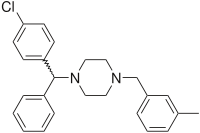
Photo from wikipedia
The use of anticholinergic medications is increasing in younger ages, yet information about xerostomia, the most common anticholinergic side effect, is limited. This case–control retrospective study examines the relationship between… Click to show full abstract
The use of anticholinergic medications is increasing in younger ages, yet information about xerostomia, the most common anticholinergic side effect, is limited. This case–control retrospective study examines the relationship between anticholinergic medication-induced xerostomia and caries status among adults between 18 and 65 years of age. The study sample comprised 649 cases with xerostomia and 649 age- and gender-matched controls. The anticholinergic burden was estimated using the anticholinergic drug scale (ADS). Caries experience was recorded by calculating the Decayed, Missing, Filled Tooth (DMFT) index. Individuals with xerostomia had a higher mean DMFT index (16.02 ± 9.50), which corresponded with a higher level of anticholinergic exposure from medications (3.26 ± 2.81) compared to their age and gender-matched controls without xerostomia (13.83 + 8.83 and 1.89 ± 2.45, respectively). Logistic regression analysis verified the effects of DMFT, the total number of AC medications, and the ADS burden on xerostomia status. Comparing adults with or without xerostomia revealed statistical differences in several risk factors, such as smoking, diabetes, sleep apnea, and the utilization of anticholinergic medications. A personalized dental care plan should include the evaluation of the anticholinergic burden from medications regardless of the patient’s age to prevent increased caries severity.
Journal Title: Dentistry Journal
Year Published: 2023
Link to full text (if available)
Share on Social Media: Sign Up to like & get
recommendations!